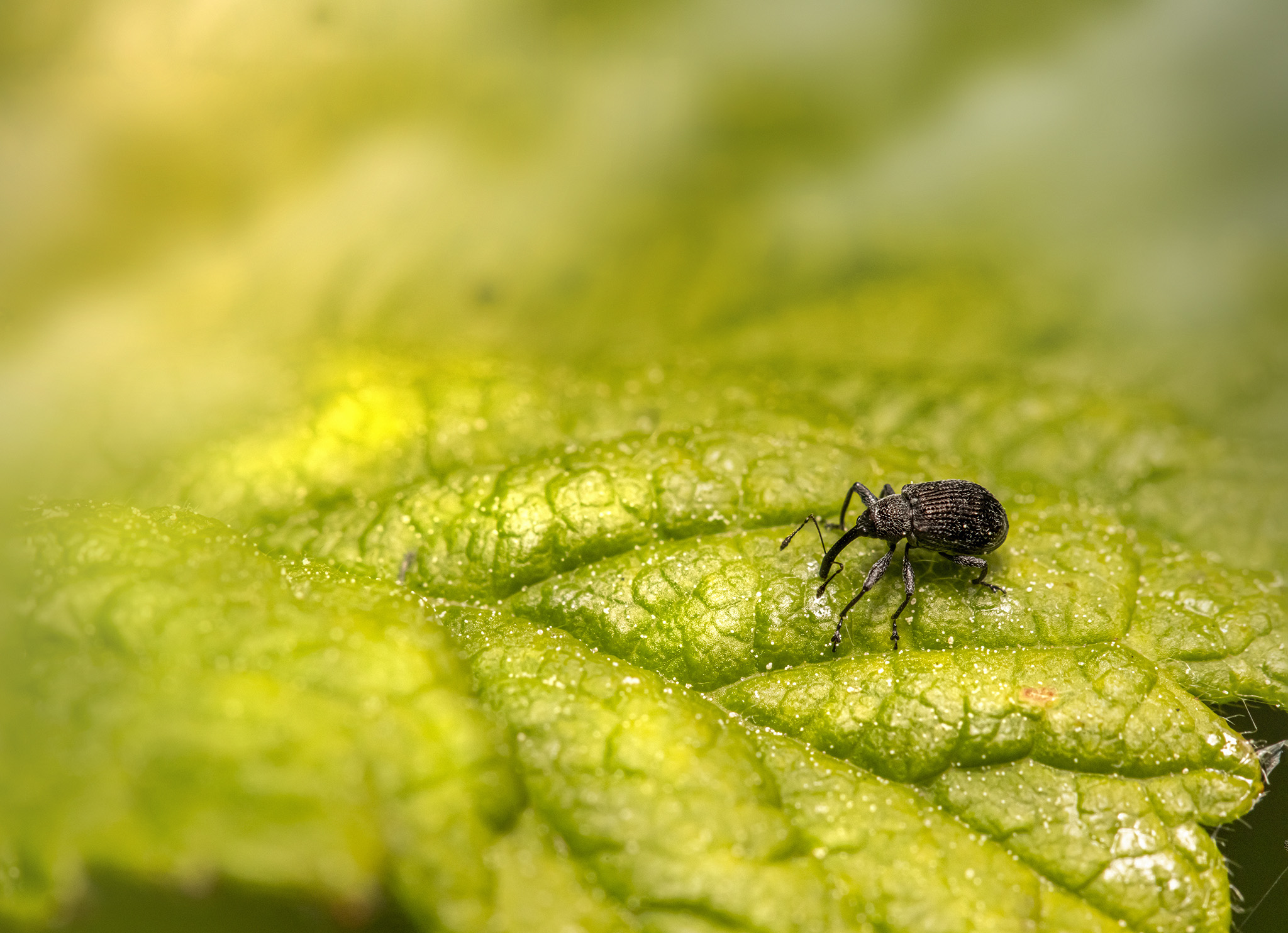Weevils are a diverse group of beetles belonging to the family Curculionidae, with over 60,000 species worldwide. Here’s a short description:
Physical Characteristics:
- Weevils are characterized by their elongated bodies, usually ranging from a few millimeters to a few centimeters in length.
- They have a distinct head with a snout or “rostrum” at the front, which often curves downward and contains mouthparts adapted for chewing or piercing plant material.
- Weevil species vary in color, but many have a hardened exoskeleton that may be patterned or mottled in shades of brown, black, or gray.
Habitat and Distribution:
- Weevils are found in a wide range of habitats worldwide, including forests, grasslands, agricultural fields, and urban areas.
- They are often associated with plants, where they may feed on leaves, stems, seeds, or roots, depending on the species.
Diet and Behavior:
- Many weevil species are herbivores, feeding on plant matter such as leaves, seeds, grains, fruits, and nuts.
- Some weevils are considered pests of agricultural crops, causing damage to stored grains, fruits, and vegetables.
- Weevils may also exhibit interesting behaviors, such as using their elongated snouts to bore into plant tissues or to excavate burrows in soil.
Life Cycle:
- Weevils undergo complete metamorphosis, with four life stages: egg, larva, pupa, and adult.
- Female weevils typically lay eggs on or near host plants, and the larvae hatch and develop within plant tissues or in the soil.
- After completing their development, larvae pupate and eventually emerge as adult weevils, ready to mate and continue the life cycle.
Ecological Role:
- Weevils play various roles in ecosystems, serving as both herbivores and decomposers.
- While some species are considered pests, many others contribute to nutrient cycling and ecosystem dynamics.
In summary, weevils are a diverse and ecologically important group of beetles known for their distinctive appearance and varied lifestyles. Their presence in ecosystems highlights the intricate interactions between insects and plants.
Visited 842 times, 5 visit(s) today
Views: 1482
Subscribe to the newsletter:
